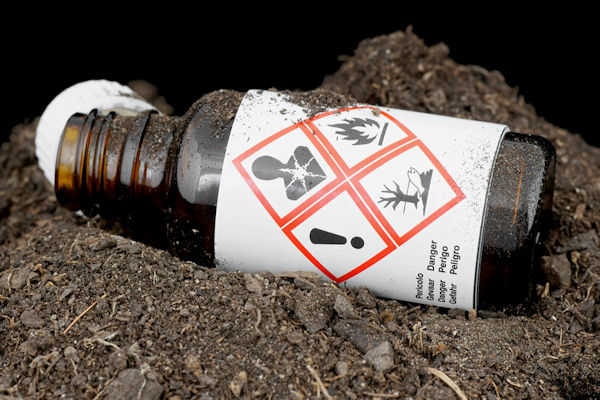Chemical Effects
The effects chemicals have on the various organs of the human body depend on several important factors:
- The form of the chemical substance, or mixture of substances: is the chemical a solid, liquid, or gas?
- How the chemical contacts the body: is the chemical ingested, inhaled, absorbed, or injected? Most common form of contact is inhalation.

A small dose from this bottle illustrates that "the dose makes the poison."
- The amount, or dose, the body receives: The amount of a substance received at one time. Dose is usually expressed as administered or absorbed dose (e.g., milligrams material/kilogram of body weight.
- How toxic the chemical is: Toxicity is the sum of adverse effects (acute or chronic injury to the human body) resulting from exposure to a material.
Knowledge Check Choose the best answer for the question.
2-5. Which term describes the amount of chemical that makes its way into the body?
You forgot to answer the question!
